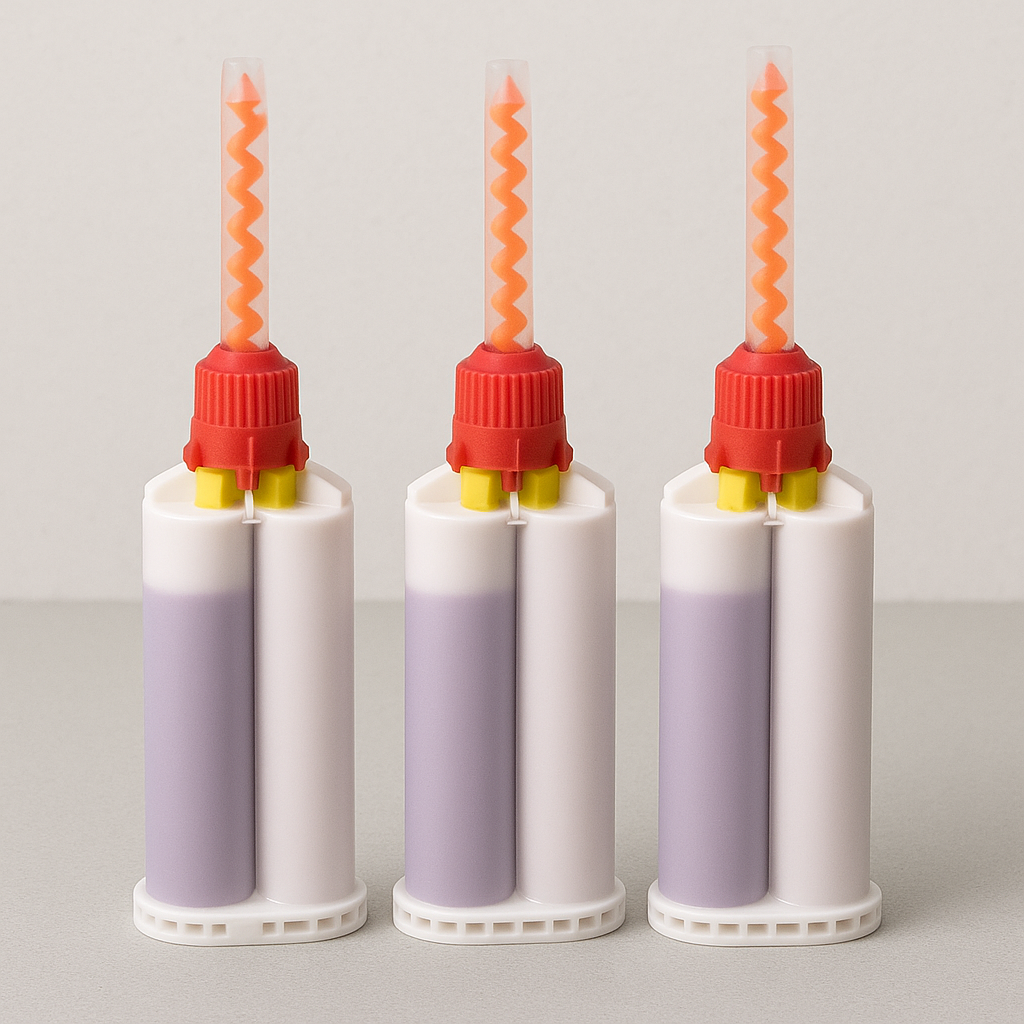When it comes to restorative dentistry, precision is everything. The success of procedures like crown and bridge work, impressions, and core buildups often depends on how well dental materials are mixed and delivered. That’s where dental mixing tips come in. Though they may seem like small accessories, mixing tips play a critical role in ensuring proper consistency, reducing waste, and delivering predictable results for both the dentist and patient.
What Are Dental Mixing Tips?
Mixing tips are disposable accessories used with automix cartridges and dispensing guns to deliver dental materials. Inside each tip, spiral or helical channels force two-part materials (like impression material, core buildup composite, or temporary crown resin) to blend together as they’re extruded. This eliminates the need for manual mixing, ensuring consistency and minimizing the risk of air bubbles or improper ratios.
The result? More accurate impressions, stronger materials, and smoother procedures.
Why Mixing Tips Matter
- Consistent Material Quality: The built-in spiral design ensures precise mixing ratios every time.
- Reduced Cross-Contamination: Single-use design keeps procedures hygienic and compliant.
- Improved Chairside Efficiency: Saves time by eliminating manual mixing and cleanup.
- Patient Comfort: Smooth, bubble-free material application means more accurate and comfortable outcomes.
Types of Dental Mixing Tips
Not all mixing tips are the same. Choosing the right type depends on the cartridge system, viscosity of the material, and procedure requirements.
1. Dynamic Mixing Tips (Helical/Spiral Design)
- Used for most impression materials and bite registration pastes.
- Internal spiral ensures proper mixing with minimal effort.
2. Static Mixing Tips
- Feature fixed channels inside.
- Common for low-viscosity materials where air entrapment is less of a concern.
3. Wide-Bore Mixing Tips
- Designed for heavy-bodied materials.
- Larger diameter allows easier extrusion without overstraining the dispenser gun.
4. Intra-Oral Mixing Tips (End-Tips / Delivery Tips)
- Attach to the end of a standard mixing tip.
- Allow direct placement of material into the prep or sulcus for better control and accuracy.
Common Applications for Mixing Tips
- Impression Materials: Vinyl polysiloxane (VPS), polyether, alginate alternatives.
- Core Build-Up Composites: Dual-cured or self-cured resins.
- Temporary Crown & Bridge Materials: Automix cartridge-based resins.
- Bite Registration Materials: Fast-set, low-resistance pastes.
How to Choose the Right Mixing Tip
When selecting mixing tips for your practice, consider the following factors:
Cartridge Ratio Compatibility
Most cartridges are 1:1 or 10:1/4:1 ratio systems.
Using the wrong mixing tip ratio leads to poor material setting.
Tip Length & Bore Size
Shorter, wider tips = less extrusion force, faster delivery.
Longer, narrow tips = more precise mixing but require more pressure.
Material Viscosity
Heavy-body impression material needs wide-bore tips.
Light-body material can use smaller-diameter tips for accuracy.
Procedure Requirements
For impressions: Standard spiral tips.
For intra-oral placement: Add end-tips for direct delivery.
Tips for Using Mixing Tips Efficiently
- Always purge the first small amount of material (a pea-sized drop) before applying—this ensures full mixing.
- Store tips in a dry, dust-free environment to prevent blockages.
- Don’t reuse tips—even if they look clean, leftover material inside can compromise mixing.
- Stock multiple sizes to cover different procedures and viscosities.
Final Thoughts
Though they might look like simple plastic attachments, dental mixing tips are essential for accuracy, efficiency, and patient outcomes. By understanding the different types and how to match them with your materials and procedures, you can improve workflow and deliver predictable, high-quality dentistry every time.

